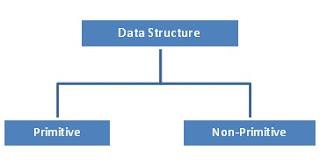(AN AUTONOMOUS UNIT OF RANCHI UNIVERSITY FROM 2009)
- Prakash Kumar, Dept. of CA
-Archana Kumari, Dept. of CA
__________________________________________________________________________________
DS : IT Sem-2(CBCS)
The
data structure is a collection of data elements organized in a
specified manner in computer’s memory and there exists an efficient method to
store and retrieve individual data elements.
i.e.
The data structure can be classified in following
ways:
Linear
data structure: In linear
data structure the data elements are arranged in a linear sequence like an
array, data is processed one by one sequentially. Linrear data structure
contains following types of data structure:
·
List
·
Array
·
Stack
·
Queue
Non-Linear
Data Structure: In non-linear
data structures, data elements are not in sequence that means insertion and
deletion are not possible in a linear manner. It contains following types:
·
Tree
·
Graph
Homogenous
Data Structure: In homogenous
data structure the data elements are of same type like an array.
Non-Homogenous
Data Structure: In
non-homogenous data structure the data elements may not be of same type like structure
in ‘C’.
Static
Data Structure: Static data
structures are ones whose sizes and structures are associated memory location
are fixed at compile time, e.g. array.
Dynamic
Data Structure: Dynamic data
structures are ones that expand or shrink as required during the program
execution and their associated memory location change, e.g. linked list.
Primitive
Data Structure: Primitive
data structures are predefined types of data as int, float, char, double.
Non-
Primitive Data Structure: These are not
defined by the programming languages but are created by the programmers. The
linear and non linear data are classified under non primitive data structure. E.g.
struct.
Data
structure Operations
The
data in the data structures are processed by certain operations. The particular
data structure chosen largely depends on the frequency of the operation that
needs to be performed on the data structure.
·
Creating
·
Inserting
·
Updating
·
Deleting
·
Traversing
·
Searching
·
Sorting
·
Merging
·
Destroying





No comments:
Post a Comment